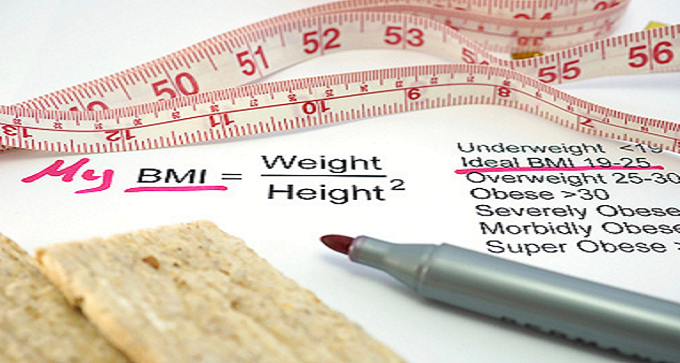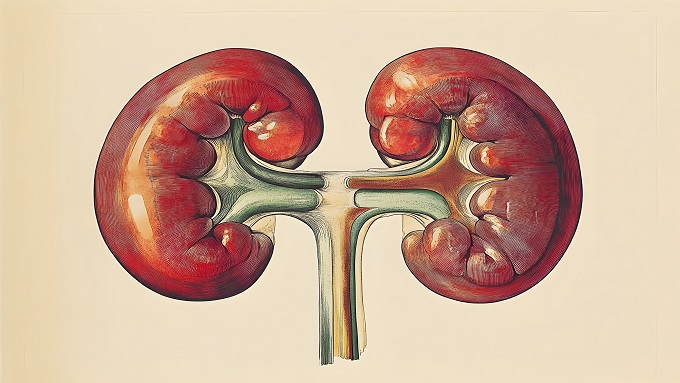BODY MASS INDEX WITH SYSTOLIC AND DIASTOLIC BLOOD PRESSURE AT A PUBLIC HEALTH CENTER IN SURABAYA, INDONESIA

Downloads
Highlights
1. The Body Mass Index (BMI) measures how much fat the body carries.
2. Obesity and overweight are characterized by an excessive buildup of fat that may be detrimental to health.
Abstract
Background: Body Mass Index (BMI) is an indicator of body fat. It is classified as underweight, normal, overweight, and obese. Obesity is a risk factor for hypertension (systolic blood pressure ≥140 mmHg or diastolic blood pressure ≥90 mmHg). Objective: To analyze the correlation between BMI with systolic and diastolic blood pressure. Methods: This was an observational research with a cross-sectional design, and the samples consisted of 60 individuals aged 35 to 59 selected using accidental sampling. Blood pressure was the dependent variable whereas BMI was the independent variable. Data were analyzed using Pearson and Spearman correlation tests. Results: There were 44 females (73.3%) and 16 males (26.7%). The largest age groupings were between 45-49 and 50-54 years (31.7%), while the smallest was between 55-59 years (5%). Thirty-three samples (55%) were overweight (>25 kg/m2), 32 samples (53.4%) had systolic blood pressure above normal (≥120 mmHg), and 42 samples (70%) had diastolic blood pressure above normal (≥80 mmHg). The Pearson correlation test between BMI and systolic blood pressure showed a weak correlation (p=0.009 r=0.336). The Spearman correlation test between BMI and diastolic blood pressure showed a weak correlation (p=0.013 r=0.321). Conclusion: There was a weak correlation between BMI with systolic blood pressure, and there was a weak correlation between BMI with diastolic blood pressure in this study.
Centers for Disease Control and Prevention (CDC). 2022. Adult body mass index, CDC.
DeMarco, V. G., Aroor, A. R., Sowers, J. R. 2014. The pathophysiology of hypertension in patients with obesity. Nature Reviews Endocrinology, 10(6): 364–376. doi: 10.1038/nrendo.2014.44.
Després, J.-P. 2012. Body fat distribution and risk of cardiovascular disease. Circulation, 126(10): 1301–1313. doi: 10.1161/CIRCULATIONAHA.111.067264.
Destyana, R., Saryono., Mursiyam. 2009. Hubungan antara indeks masa tubuh dengan tekanan darah dan golongan darah di Kelurahan Mersi Kecamatan Purwokerto Timus. Jurnal Keperawatan Soedirman, 4(2). doi: 10.20884/1.jks.2009.4.2.223.
Dua, S., Bhuker, M., Sharma, P., Dhall, M., Kapoor, S. 2014. Body mass index relates to blood pressure among adults. North American Journal of Medical Sciences, 6(2): 89. doi: 10.4103/1947-2714.127751.
Emaus, A., Wilsgaard, T., Furberg, A., Thune, I. 2011. Blood pressure, cardiorespiratory fitness and body mass: Results from the Tromsí¸ Activity Study. Norsk Epidemiologi, 20(2). doi: 10.5324/nje.v20i2.1341.
Jiang, S.-Z., Lu, W., Zong, X., Ruan, H., Liu, Y. 2016. Obesity and hypertension. Experimental and Therapeutic Medicine, 12(4): 2395–2399. doi: 10.3892/etm.2016.3667.
Khasanah, D. N. 2022. The risk factors of hypertension in Indonesia (data study of Indonesian family life survey 5). Journal of Public Health Research and Community Health Development, 5(2), p. 80. doi: 10.20473/jphrecode.v5i2.27923.
Kotsis, V., Stabouli, S., Papakatsika, S., Risoz, Z., Parati, G. 2010. Mechanisms of obesity-induced hypertension. Hypertension Research, 33(5): 386–393. doi: 10.1038/hr.2010.9.
Kurniawan, A. H., Suwandi, B., Prakoso, D.T., Moksidy, R.C., Talitha, I., et al. 2021. Correlation between body mass index to hypertension in a rural area in East Java. Mutiara Medika: Jurnal Kedokteran dan Kesehatan, 21(1): 26–31. doi: 10.18196/mmjkk.v21i1.7385.
Kushner, R. 2015. Evaluation and management of obesity. 19th edn. Edited by D. Kasper et al. United State: McGraw-Hill.
Landi, F., Calvani, R., Tosato, M., Martone, A.M., Ortolani, E., et al. 2018. Body mass index is strongly associated with hypertension: Results from the longevity check-up 7+ study', Nutrients, 10(12): 1976. doi: 10.3390/nu10121976.
Mardiansjah, F. H., Rahayu, P., Rukmana, D. 2021. New patterns of urbanization in Indonesia: Emergence of non-statutory towns and new extended urban regions. Environment and Urbanization ASIA, 12(1): 11–26. doi: 10.1177/0975425321990384.
Mendizábal, Y., Llorens, S., Nava, E. 2013. Hypertension in metabolic syndrome: Vascular pathophysiology. International Journal of Hypertension, 2013: 1–15. doi: 10.1155/2013/230868.
Ng, R., Sutradhar, R., Yao, Z., Wodchis, W.P., Rosella, L.C. 2020. Smoking, drinking, diet and physical activity”modifiable lifestyle risk factors and their associations with age to first chronic disease. International Journal of Epidemiology, 49(1): 113–130. doi: 10.1093/ije/dyz078.
Nuttall, F. Q. 2015. Body Mass Index. Nutrition Today, 50(3): 117–128. doi: 10.1097/NT.0000000000000092.
Oddo, V. M., Maehara, M., Rah, J. H. 2019. Overweight in Indonesia: an observational study of trends and risk factors among adults and children. BMJ Open, 9(9): e031198. doi: 10.1136/bmjopen-2019-031198.
Puskesmas Mojo Surabaya (2015) Data Puskesmas Mojo Surabaya.
Rahmawan, D., Kalanjati, V. P., Abdurachman, A. 2020. Oral health status and the body mass index in Young Adults. Folia Medica Indonesiana, 56(4), pp. 275–282. doi: 10.20473/fmi.v56i4.24611.
Saputri, O. N., Kalanjati, V. P. and Rahman, M. A. 2020. Body Mass Index (BMI) of children with Tetralogy of Fallot (TOF). Majalah Biomorfologi, 30(1), 14–18. doi.org: 10.20473/mbiom.v30i1.2020.14-18
Sarah, A. 2013. Hubungan indeks massa tubuh dengan tekanan darah anak di Sekolah Dasar Negeri 064979 Medan. e-jurnal Fakultas Kedokteran USU, 1(1).
U.S. Department of Health and Human Sciences (2003) The seventh report od the Joint National Committee on prevention, detection, evaluation and treatment of high blood pressure. NIH Publication.
World Health Organization. 2020. Hypertension, WHO.
Copyright (c) 2023 Bella Patricia Simanjorang, Florentina Sustini, Sundari Indah Wiyasihati

This work is licensed under a Creative Commons Attribution 4.0 International License.
1. The journal allows the author(s) to hold the copyright of the article without restrictions.
2. The journal allows the author(s) to retain publishing rights without restrictions.
3. The legal formal aspect of journal publication accessibility refers to Creative Commons Attribution 4.0 International License (CC-BY).
































